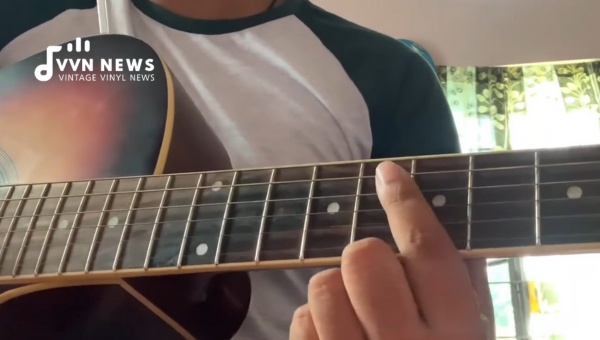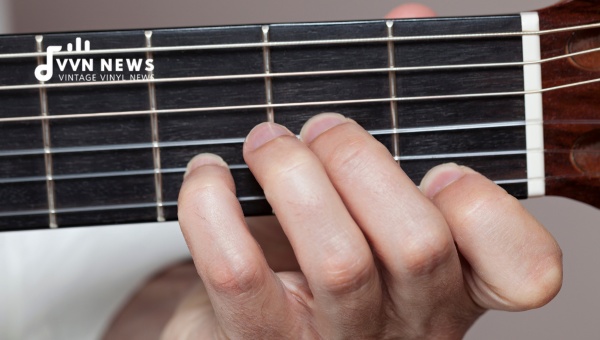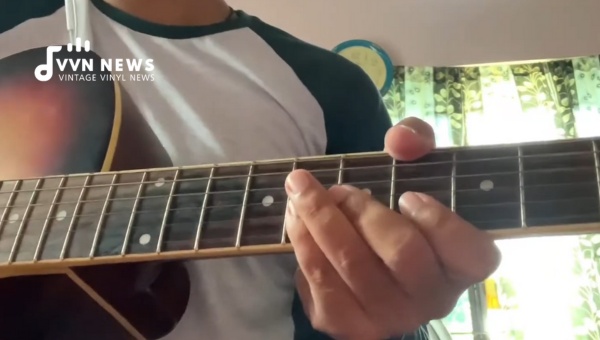I have come across various musical terms that might sound complex to the average person.
Today, I want to delve into one particular term that not only holds great importance in music theory but also adds a unique touch to compositions – the D sharp minor triad.
Whether you’re a music enthusiast or just curious about expanding your knowledge in this field.
This article aims to provide you with a comprehensive understanding of the D sharp minor triad and how it contributes to the world of music.
By exploring the structure and function of this triad, we can gain insight into its significance within different musical contexts.
Whether you are an aspiring musician, composer, or simply someone interested in expanding your musical vocabulary, understanding the D sharp minor triad can open up new creative possibilities and enhance your overall appreciation for music.
Describe the structure of a D Sharp Minor Triad
The D sharp minor triad is composed of three distinct notes: D#, F#, and A#. These notes combine to create a unique and harmonically rich sound.
Let’s break down the structure of this triad in more detail:
- Root Note: The root note of the D sharp minor triad is D#. This note acts as the foundation and defines the overall tonality of the chord.
- Minor Third: The next note in the triad is F#, which is a minor third interval above the root. This interval contributes to the “minor” quality of the chord, giving it a sad or somber character.
- Perfect Fifth: The third and final note in the D sharp minor triad is A#, which forms a perfect fifth interval above the root. This interval adds stability and brightness to the chord, creating a pleasing musical balance.
The structure of a D sharp minor triad consists of a root note (D#), followed by a minor third interval (F#), and concluding with a perfect fifth interval (A#).
By understanding this structure, you can better comprehend how these notes interact with one another and how they contribute to the overall sound and mood of compositions that incorporate this chord.
Also Read: Musical Key Characteristics & Emotions [Understand Their Impact]
What characteristics define D Sharp Minor Triads?

The D sharp minor triad possesses certain characteristics that define its unique sound and emotional quality.
Understanding these characteristics can help musicians utilize this triad effectively in their compositions or performances.
- Minor Tonality: A sharp minor is a chord that falls under the category of minor tonality. This means it has a distinct melancholic or darker sound compared to major chords. It adds a certain level of tension or sadness to musical passages.
- Tension and Resolution: The D sharp minor triad, like all minor triads, creates a sense of tension that craves resolution. This tension can be resolved by moving to a chord with a major quality, often the relative major chord (F# major in this case). This creates a satisfying resolution and emotional contrast in music.
- Versatility: The D sharp minor triad is versatile and can be used in various musical genres, including classical, jazz, rock, and pop. Its emotional depth makes it suitable for conveying introspection, sorrow, or drama in compositions.
- Expression of Complexity: Because D sharp minor contains three different notes (D#, F#, A#), it adds complexity and richness to musical arrangements. This complexity allows for intricate harmonic progressions and interesting melodic lines.
- Harmonic Function: In music theory, the D sharp minor triad often serves as the tonic or starting point for establishing tonality within a piece of music. It lays the foundation for further exploration and development of musical ideas.
- Compatibility with Related Scales: The D sharp minor triad is derived from the D# natural minor scale (D#, E#, F#, G#, A#, B, C#). This scale provides additional notes that can be incorporated into compositions utilizing the D sharp minor triad, allowing for more creative options when constructing melodies or harmonies.
Understanding the characteristics of the D sharp minor triad allows musicians to make intelligent choices when composing or improvising.
By leveraging its emotional quality, versatility, and compatibility with related scales, musicians can create captivating musical passages that resonate deeply with listeners.
Triads From the D Sharp Minor Scale [D#, F#, A#]
In music theory, a triad is a chord consisting of three notes played simultaneously.
The D sharp minor scale serves as the foundation for creating triads with different qualities.
Let’s explore the triads that can be formed from the D sharp minor scale:
- D# minor (D#m): The first triad we can derive from the D sharp minor scale is the D# minor triad. This triad consists of the root note D#, the minor third interval F#, and the perfect fifth interval A#. The D#m triad carries a melancholic and reflective vibe, often found in pieces with darker undertones.
- F# major (F#): The second triad we can form is an F# major triad. It includes F#, which acts as the root note, A#, which forms a major third interval above F#, and C#, which creates a perfect fifth interval above F#. This triad offers a sense of brightness and upliftment when used in compositions.
- A# augmented (A#+): The third position on our list is A# augmented, signified by A#+. It contains the notes A#, C##, and E#. The augmented quality of this triad arises from raising the fifth note of a major triad by a half step. This creates tension and lends itself well to moments of suspense or climax in musical pieces.
- C# diminished (C#dim): Finally, we have C# diminished, represented by C#dim. This triad consists of C#, E, and G notes. Diminished chords are known for their unsettled and tense sound due to their stacked minor thirds. They are often used to transition between different chords or evoke a sense of uncertainty in musical compositions.
Understanding these different triads allows composers and musicians to create unique harmonies and progressions within the D sharp minor scale.
The varying qualities of these triads provide opportunities to evoke diverse emotions in compositions, from melancholy and introspection to brightness and tension.
Also Read: B Flat Minor Triad Guide 2025 [Improve Your Music Theory]
Instructions for Playing a D Sharp Minor Chord on Piano and Guitar

Whether you’re a pianist or guitarist, playing the D sharp minor chord is an essential skill to have in your repertoire.
Here are step-by-step instructions for playing this chord on both instruments:
Piano:
- Position your hands on the piano keyboard so that your right thumb is on the root note, D#, which is the black key to the right of middle C.
- Place your middle finger on the F#, which is two white keys above the root note.
- Lastly, position your pinky finger on A#, three white keys above the root note.
- Press all three keys simultaneously to produce a full and resonant sound.
- Ensure proper hand posture is maintained by keeping your fingers curved and hovering just above the keys, allowing for quick and precise movements.
Guitar:
- Begin by placing your index finger on the fourth fret of the low E string (the thickest string). This corresponds to playing a D# note.
- Next, place your ring finger on the sixth fret of the A string (the second thickest string), producing an F# note.
- Lastly, position your pinky finger on the sixth fret of the D string (the third thickest string) to play an A# note.
- Strum only these three strings from low to high while ensuring that you are not accidentally touching or muting any other strings with fingers that should be positioned higher up on the guitar neck.
- To achieve a clean and clear sound, press down firmly enough with each finger without exerting unnecessary tension in your hand and wrist.
Regularly incorporating these chord shapes into your practice routine will help build muscle memory and improve your overall proficiency in playing the D sharp minor chord across different musical contexts.
Also Read: B Minor Triad [Master Chord Progression In Just Minutes]
What are the different D Sharp Minor Triad Inversions?
Inversions of a chord occur when the positions of the notes within the chord are rearranged.
This process can create new voicings and alter the overall sound of the chord. Let’s explore the different inversions of the D sharp minor triad:
- Root Position: The root position is when the root note (D#) is at the bass or lowest pitch of the triad. In this configuration, F# is in the middle, and A# is at the top. This is considered the primary or standard form of the D sharp minor triad.
- First Inversion: In the first inversion, we take the third note (F#) and move it an octave higher, above both D# and A#. The new order becomes F#, A#, and D#. This inversion gives a unique character to the chord, with a different emphasis on notes.
- Second Inversion: The second inversion involves taking both F# and A#, shifting them an octave higher, making A# the highest note in the chord succession: A#, D#, F#. This rearrangement adds a distinct quality to this particular inversion.
By understanding these different inversions, musicians can explore various possibilities for using them in their compositions.
Each inversion offers a distinct voicing and sonic color that can enhance musical arrangements and add complexity to harmonic progressions.
What’s the method to play D Sharp Minor Triad Inversions on guitar and piano?

To play D Sharp Minor Triad inversions on guitar and piano properly, you’ll need to understand the concept of inversions and learn the specific fingerings for each variation.
Inversions refer to changing the order in which the notes of a chord are played while still maintaining the same three notes.
Playing D Sharp Minor Triad Inversions on Guitar:
- 1st Inversion: Place your index finger on the 4th fret of the A string (D#), your middle finger on the 6th fret of the D string (A#), and your ring finger on the 6th fret of the G string (F#).
- 2nd Inversion: Position your index finger on the 4th fret of the D string (A#), your middle finger on the 6th fret of the G string (F#), and your ring finger on the 6th fret of the B string (D#).
- Root Position: This inversion is when you place your index finger on the 6th fret of E string (F#), your middle finger on the 7th fret of B string (D#), and your ring finger on the 8th fret of G string (A#).
Playing D Sharp Minor Triad Inversions on Piano:
- Root Position: Place your thumb on D#, index finger on F#, and pinky finger on A#. These keys are consecutive white keys starting from D#, skipping over one key each time.
- 1st Inversion: Shift from root position by moving your thumb to F#, index finger to A#, and pinky finger to D#. These keys will maintain a consecutive pattern but will be higher up than the root position.
- 2nd Inversion: Adjust from first inversion by moving thumb to A#, index finger to D#, and pinky finger to F#. These keys will create a consecutive pattern higher than the first inversion.
By mastering various inversions of the D Sharp Minor Triad, you can add depth and variety to your playing.
Practice these fingerings slowly and accurately, gradually increasing your speed as you become more comfortable with each inversion.
Remember that consistency in fingering is essential for smooth transitions between inversions.
With some dedicated practice, you’ll soon be able to incorporate these inversions into your guitar or piano repertoire seamlessly.
Also Read: E Flat Minor Triad [How To Crack The Code Of Music Notation]
Tracks Incorporating D Sharp Minor Triad
The D sharp minor triad is a versatile chord that has been utilized in numerous musical compositions across different genres.
Its unique tonal qualities make it an ideal choice for expressing a range of emotions.
Let’s explore some tracks that incorporate the D sharp minor triad, showcasing its use and significance within their respective genres.
Classical
In classical music, the D sharp minor triad often appears in pieces to create tension and a sense of melancholy.
Composers like Chopin and Rachmaninoff often incorporated this triad in their compositions to evoke deep emotional responses from listeners.
Chopin’s Prelude in D sharp minor, Op. 28 No. 24, reflects the reflective nature of the triad through its melancholic melody.
Rock
Rock music has a history of incorporating powerful chords to create energetic and expressive tracks.
The D sharp minor triad finds its place in many rock songs, adding intensity to the overall sound.
One notable example is “Smells Like Teen Spirit” by Nirvana. The song’s prominent guitar riff is based on a D sharp minor power chord progression, contributing to its raw and rebellious energy.
Pop
In pop music, catchy melodies are often accompanied by chord progressions that enhance the overall mood of the song.
The D sharp minor triad can be found in various pop tracks, providing emotional depth and color.
A popular example is Adele’s “Someone Like You.” The hauntingly beautiful piano chords throughout the song include the D sharp minor triad, creating a sense of longing and vulnerability.
Jazz
Jazz music relies heavily on harmonic complexity and improvisation. Jazz musicians frequently use the D sharp minor triad as a starting point for exploration and improvisation within their solos.
Tracks like John Coltrane’s “Giant Steps” showcase how this triad can be expanded upon to create intricate and evocative jazz compositions.
Electronic
In the realm of electronic music, the D sharp minor triad is often utilized to add an atmospheric and ethereal quality to tracks.
Artists like Deadmau5 incorporate this chord in their compositions, creating dreamy and introspective soundscapes that captivate listeners.
As you explore these tracks, listen closely for the moments when the D sharp minor triad is utilized. Please pay attention to how it contributes to the overall mood, emotion, and energy of each composition.
Whether it’s in classical, rock, pop, jazz, or electronic music, the versatility and expressive power of the D sharp minor triad makes it an essential element in a wide range of musical genres.
Also Read: A Sharp Minor Triad [Unlock The Mystery Of Music Theory]
FAQs about D Sharp Minor Triad
Can the D sharp minor triad be written as E flat minor as well?
Yes, the D sharp minor triad can be written as E flat minor due to enharmonic equivalence. In music theory, enharmonic equivalents are different notations for the same pitch.
What are the characteristics of a D sharp minor triad?
The D sharp minor triad is known for its sad and reflective quality. It creates a sense of tension and provides an emotional depth to compositions.
How can I play a D sharp minor chord on the piano?
To play a D sharp minor chord on the piano, place your thumb on D#, your middle finger on F#, and your pinky finger on A#. Play these three notes simultaneously, and you’ll have a D-sharp minor triad.
What is the first inversion of a D sharp minor triad?
The first inversion of a D sharp minor triad involves placing F# as the lowest note, followed by A# above it, and then D# on top. This inversion provides a unique voicing to the chord.
Are there any popular tracks that incorporate the D sharp minor triad?
Yes, The iconic opening notes in Beethoven’s “Moonlight Sonata” use the melancholy beauty of the D sharp (or E flat) minor triad. Some introspective melodies in contemporary pop and rock music also utilize this chord for its emotional impact.
Conclusion
The D sharp minor triad is a powerful and versatile chord that has its place in the world of music.
Its unique structure and characteristics give it a distinct sound that adds depth and emotion to compositions.
Whether you’re playing it on a piano or guitar, understanding the inversions and variations of this chord can enhance your musical repertoire.
Exploring tracks that incorporate the D sharp minor triad can inspire your own compositions, allowing you to harness its expressive qualities.








